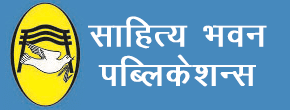भूगोल (Geography) Syllabus For B.A. II Year of Guru Ghasidas Vishwavidyalaya, MATS University, Pandit Ravishankar Shukla University, Bastar University, Bilaspur University, Sarguja University.
Paper-I: Economic and Resources Geography
Unit I: Meaning, Scope, and approaches to economic geography; Main concepts of economic geography; Resource: concept and classification; Natural resources: soil, forest, and water.
Unit II: Mineral resources: iron ore and bauxite; Power resources: coal, petroleum, and hydroelectricity; Resource conservation; Principal crops; wheat, rice, sugarcane, and tea.
Unit III: Agricultural regions of the world (Derwent Whittlesey); Theory of agricultural location (Von Thunen); Theory of industrial location (Weber); Major industries: iron and steel, textiles, petrochemical, and sugar; industrial regions of the world.
Unit IV: World transportation: major trans-continental railways, sea and air routes; International trade: patterns and trends; Major trade blocks: LAFTA, EEC, ASEAN; Effect of globalization on developing countries.
Unit V: Conservation of resources; the evolution of the concept, principles, philosophy, and approach to conservation, resources conservation, and practices. Policymaking and sustainable development.
Paper-II: Geography of India
Unit I: Physical Features: Structure, Relief, Climate, Physiographic Regions, Drainage, Climate-origin and mechanism of monsoon, and regional and Seasonal variation.
Unit II: Natural Resources: Soils—types, their distribution, and characteristics. Water Resources (major irrigation and hydel power projects); Forests—types, distribution, economic significance, and conservation. Mineral and Power resources—Iron-ore, Manganese, Copper, Coal, Petroleum and Natural gas, Non-conventional sources of energy.
Unit III: Cultural Features: Population-Growth, Density, and Distribution. AgricultureMajor crops, the impact of the Green Revolution and Agricultural regions.
Unit IV: Industries Localization, Development & Production—Iron and steel, Cotton Textile, Cement, Sugar, Transport, Foreign Trade, Industrial Region.
Unit V: Detailed Study of the following regions of India: Kashmir Valley, NorthEast Region, Chhota Nagpur Plateau, Thar Desert, Islands of India.
Paper-III: Practical Geography
Section A: Map Interpretation, Projections and Statistical Methods
Unit I: Distribution Maps: Dot Map, Choropleth Map, and Isopleth Map.
Unit II: Map Projections: Definition and classification; Conical, Zenithal, and Cylindrical Projections.
Unit III: Interpretation of Weather Maps: Use of Meteorological Instruments.
Unit IV: Statistical Methods: Quartile: Mean Deviation, Standard Deviation, and Quartile Deviation; Relative Variability and Co-efficient of Variation.
Section B: Surveying
Unit V: Surveying: Whole Circle Bearing and Reduced Bearing, Methods of Prismatic Compass Survey.
















![अर्थशास्त्र (Economics) [for B.N. Mandal University & T.M. Bhagalpur University]](https://i0.wp.com/sahityabhawanpublications.com/wp-content/uploads/2017/10/2324-Economics.jpg?resize=245%2C300&ssl=1)




![अर्थशास्त्र (Economics) [for Kumaun University, Nainital] - Sahitya Bhawan Publications](https://i0.wp.com/sahityabhawanpublications.com/wp-content/uploads/2018/01/2946-economics_final_curve.jpg?resize=247%2C300&ssl=1)
Reviews
There are no reviews yet.